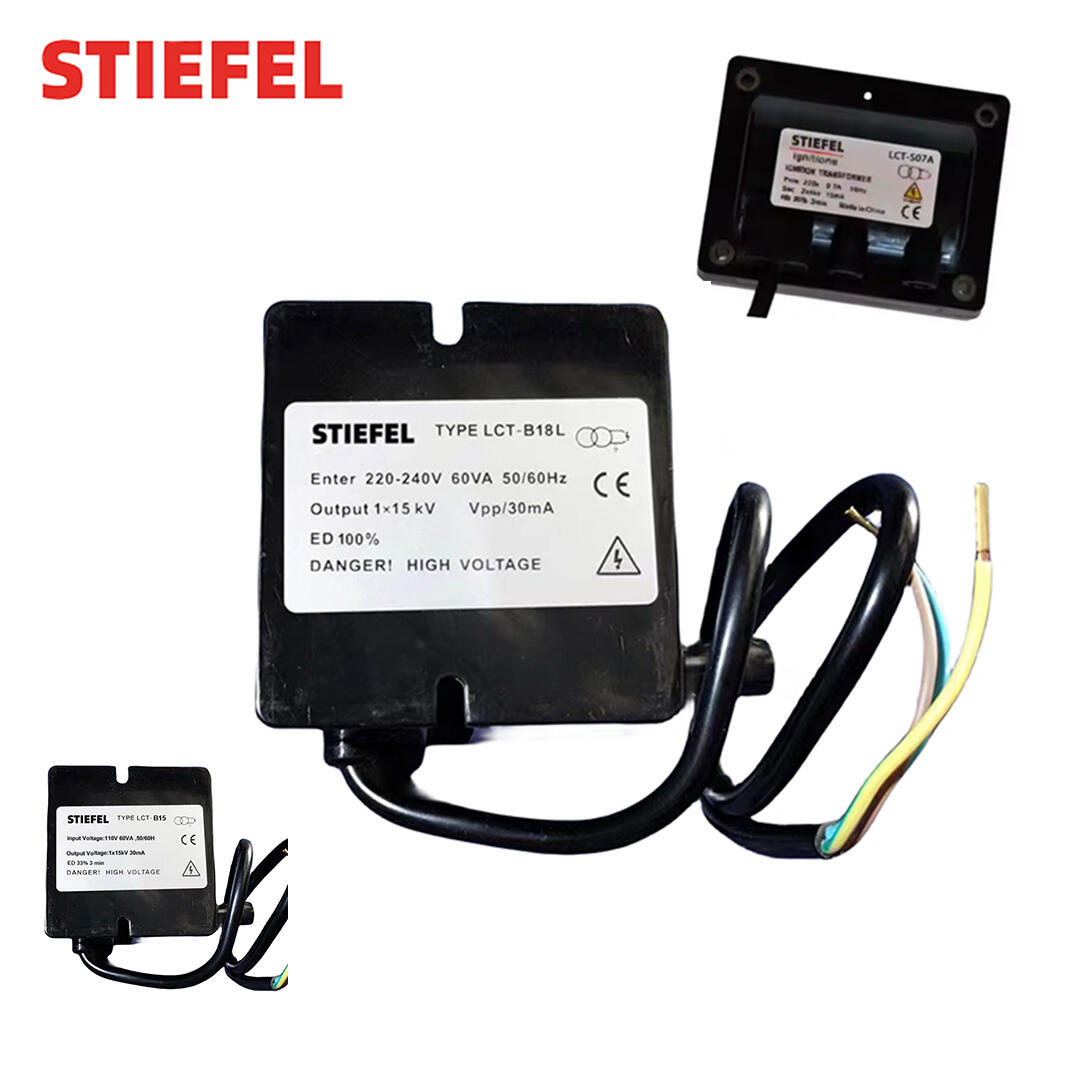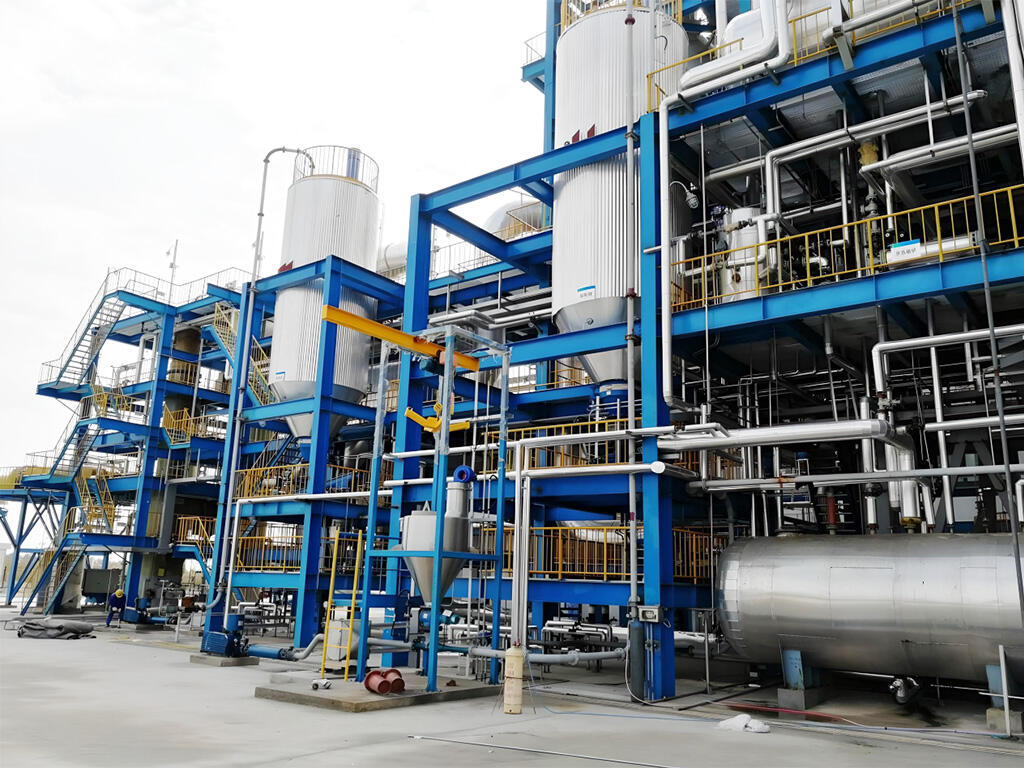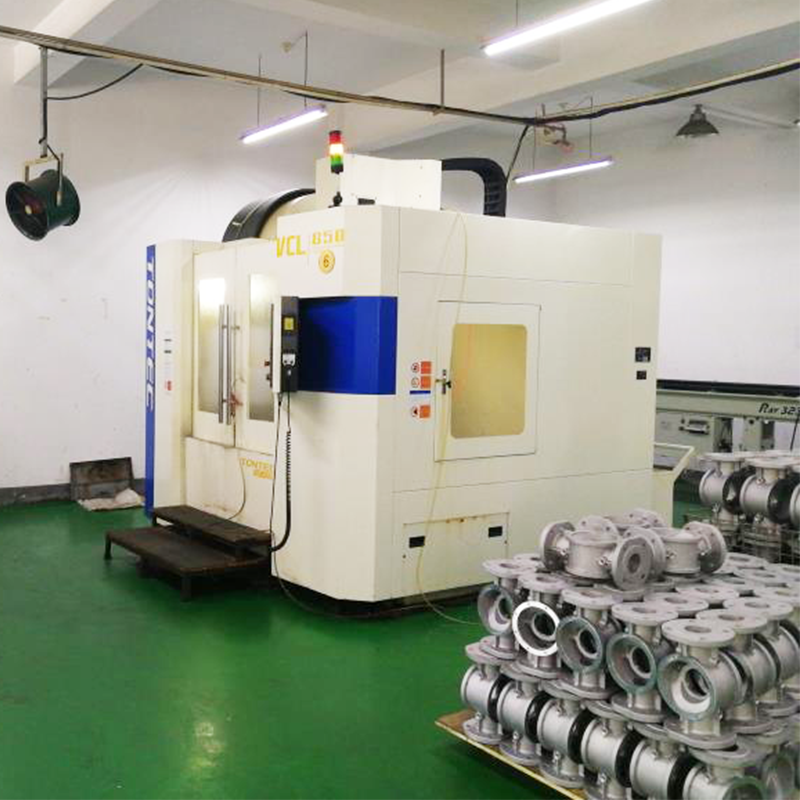How Ignition Transformers Work: Enabling Reliable Arc Generation in Combustion
The Critical Need for Reliable Ignition in Combustion Systems
For combustion systems to work properly, they need reliable ignition all the time otherwise things can go wrong fast. We're talking about operational problems, expensive shutdowns, and serious safety risks. Recent research from top energy experts back in 2023 showed something pretty shocking actually - almost 4 out of 10 unexpected plant shutdowns happen because the ignition system fails somehow. That's where ignition transformers come into play. These devices create stable arcs that can light up those tricky fuel air mixtures even when weather conditions change or other variables throw a wrench in the works. Most maintenance crews know this is critical for keeping operations running smoothly day after day.
Principle of Operation: Transforming Voltage to Generate Ignition Arcs
Ignition transformers are basically step-up voltage converters that boost regular input voltages between 120 and 240 volts AC all the way up past 10,000 volts using electromagnetic induction in their primary and secondary windings. When used in industry settings, these transformers usually produce secondary voltages somewhere between 15,000 and 25,000 volts. That kind of power helps create sparks strong enough to jump the gap between electrodes inside those tough high-pressure combustion chambers we see in many factories. The resulting high voltage arc plays a critical role in getting stable combustion going, whether dealing with natural gas, propane or other fuels commonly found in different manufacturing environments around the world.
Case Study: Failure Analysis in Industrial Boiler Ignition Systems
A 2023 industry report on coal-fired boilers identified insulation breakdown due to thermal stress as the root cause of 72% of transformer-related outages. By upgrading to encapsulated units with Class H insulation, engineers reduced failure rates by 64% over an 18-month period, demonstrating the importance of material selection in harsh thermal environments.
Advancements in Efficiency and Miniaturization of Ignition Transformers
The latest solid state technology has shrunk transformer sizes down around 40 percent compared to older versions, plus they work better too. When it comes to high frequency electronic ignition transformers used in those big combined cycle power plants, we're seeing efficiencies hit nearly 94 percent these days. That's way above what most traditional inductive models manage, which usually hover around 82 percent efficiency. What makes these new transformers really stand out though are their built in diagnostic systems. These clever circuits keep an eye on how the windings hold up over time and can actually spot signs of wear long before anything breaks down completely. This kind of early warning system means less downtime for maintenance crews and happier plant operators overall.
Selecting the Right Ignition Transformer Based on System Requirements
Key selection criteria include output voltage (12 kV for natural gas, 18 kV or higher for heavy oils), duty cycle (continuous vs. intermittent), and environmental protection ratings such as NEMA 4X for corrosive settings. Aligning these specifications with burner requirements reduces misfire incidents by up to 53%, according to 2022 combustion engineering data.
Electronic vs. Inductive Ignition Transformers: Performance, Durability, and Applications
Comparative Analysis: Electronic and Inductive Transformer Technologies
Modern electronic ignition transformers work differently than older inductive ones. They use solid state circuitry to create those precise voltage pulses needed for proper ignition, while traditional inductive models depend on electromagnetic coils instead. According to data from the Automotive Engineering Society back in 2023, these newer electronic systems showed impressive results with around 98% reliability under controlled lab settings. That's pretty good when we compare it to just 89% for the older inductive versions. But there's one area where inductive transformers still hold their own advantage. These older models tend to handle really hot environments better, sometimes surviving temperatures as high as 482 degrees Fahrenheit or 250 Celsius. Their simpler design makes them tougher in such harsh conditions, which explains why many mechanics still keep some in stock for specialty applications.
Electronic Ignition Transformers: Precision Control for Modern Burners
Electronic models integrate seamlessly with programmable logic controllers (PLCs), allowing spark duration adjustments within a 0.1–5 ms range for optimal fuel-specific performance. A 2024 burner efficiency study showed these systems reduce gas waste by 12–18% in industrial furnaces. Their compact footprint (<120 mm width) also supports deployment in space-constrained installations.
Inductive Ignition Transformers: Rugged Simplicity for Harsh Conditions
Inductive transformers remain preferred in high-vibration environments like cement kilns and offshore platforms, offering a 50,000-hour MTBF. Unlike electronic units, which require stable power (±5% voltage tolerance), inductive transformers can operate reliably under ±20% voltage fluctuations—making them ideal for remote sites with unstable grid supply.
Case Study: Retrofitting Legacy Systems with Electronic Ignition Transformers
A 2023 retrofit at a 1980s-era glass factory replaced 32 inductive transformers with electronic models, resulting in significant improvements:
| Metric | Improvement | Annual Savings |
|---|---|---|
| Ignition attempts | -74% | $18k |
| CO emissions | -29% | $7.5k |
| Maintenance intervals | 6x longer | $14k |
Balancing Cost and Longevity in Ignition Transformer Selection
Although electronic transformers carry a 15–20% higher initial cost, their adaptive control delivers return on investment within 18–24 months in high-cycle operations (>50 ignitions/day). For systems with fewer than 10 daily starts, inductive models remain economically viable despite increased long-term maintenance demands.
Voltage Specifications and Electrical Performance of Ignition Transformers
Standard Input Voltage Ranges and Power Source Compatibility
Ignition transformers typically work with different voltage inputs depending on how they're used. For systems that run continuously, they need between 12 and 24 volts DC. But when dealing with equipment that only runs occasionally, these transformers handle 120 to 230 volts AC instead. This range makes them compatible with most standard industrial power supplies found on factory floors today. Getting the voltage wrong really matters though. A recent study from the industrial combustion field showed that mismatched inputs can cut down efficiency by as much as 35%. That's significant for operations running around the clock. Many newer models come equipped with smart circuitry now. These auto-sensing features let the transformer adjust itself if there are minor voltage changes within about plus or minus 10%, so performance stays consistent even when electrical conditions fluctuate slightly during operation.
Output Voltage Requirements Across Fuel Types
Most natural gas systems need somewhere between 8 and 12 kilovolts to get that fuel-air mix burning properly. Oil based systems are different though they generally require higher voltages ranging from 15 to 25 kV because of the thicker consistency of oil and the need for better atomization when it burns. When operators run these systems under their recommended voltage levels for specific fuels, things start going wrong pretty quickly. Failure rates jump up around 40%, which means equipment sits idle longer than it should. Things get even trickier at higher altitudes or in really humid areas. Anyone working with combustion systems knows that once elevation passes 2,000 meters mark, there's usually about a 15% boost needed in voltage output just to make up for thinner air density affecting performance.
Typical Output Range (10,000–25,000 V) in Commercial Ignition Transformers
The voltage range varies quite a bit depending on what kind of equipment we're talking about. Residential boilers typically work with around 10 kV, whereas industrial turbines need much more power at about 25 kV. Looking at recent data from the Arc Efficiency Report released last year, most natural gas systems fall somewhere near 12 kV as their middle ground, while oil burners tend to run hotter with an average of 18 kV. For those special cases like waste incinerators where fuel quality can be all over the map, operators often bump up to between 20 and 25 kV just to be safe. And when it comes to higher voltages, there's a catch too. The insulation needs get thicker as well. Every time the voltage goes up by 5 kV, manufacturers have to add roughly 20% more insulation material inside these systems to stop dangerous internal arcs from forming.
Impact of Voltage Fluctuations on Ignition Reliability
When voltage goes outside the safe range of plus or minus 5%, around a quarter of all ignition problems in gas turbines happen according to some recent testing back in 2022 looking at how stable combustion really is. If the power stays too low for long periods, coils start wearing out faster than normal. And when there's a sudden spike above 130% of what the system was designed for, those magnetic cores inside get damaged for good. Most equipment makers suggest connecting transformers to either voltage stabilizers or backup power systems especially where electricity isn't so reliable. The numbers from actual field work indicate that implementing these solutions cuts down on ignition issues causing downtime by roughly two thirds across refineries. Of course getting everything properly set up takes time and money but the payoff in operational reliability makes it worth considering.
Integration with Flame Safety Systems: Synchronization and Control
Synchronizing Ignition Pulses with UV Flame Sensor Activation
Getting combustion control right really comes down to how well the system times when it starts the ignition versus when it actually detects that flame. Most UV sensors take somewhere around 2 to 4 seconds after creating an arc before they can be sure there's a proper flame going. When these timings don't match up properly, things get problematic. If the fuel cuts off too soon, we end up with failed ignitions that waste time and resources. But wait too long, and we risk letting unburned fuel build up in the system, which is a serious safety concern as well as inefficient operation. Both scenarios create headaches for operators trying to maintain safe and efficient operations.
Role of Ionization Electrodes in Feedback Loops with Ignition Transformers
Ionization electrodes work by measuring how conductive a flame is, sending back current readings between about 2 and 20 microamps to the control system. What this means for ignition transformers these days is they can tweak the spark timing on the fly, adjusting within plus or minus 50 milliseconds of each cycle. Some of the newer setups take things even further with CAN bus technology built right in. These systems cut down on signal lag to under 5 milliseconds, which makes all the difference when trying to keep flames stable in those tricky lean burn situations where there's not much fuel available.
Case Study: Safety Failures in Integrated Control Systems of Combined Cycle Plants
Looking at data from 47 combined cycle plants in 2023 showed something interesting about those shutdown problems during combustion. About 62 percent of them actually happened because the ignition transformers just weren't syncing properly with the flame safeguard controllers. Take one particular plant for example. They kept getting locked out repeatedly because there was this annoying 0.8 second lag time with their UV sensors validating everything. Turns out they fixed it by updating some firmware so that the system would listen first to when the transformers were ready instead of using those old school polling methods that everyone had been relying on before.
Ensuring Timing Compatibility in Ignition and Flame Detection Sequences
When setting things up right, it makes sense to match transformer output phases with what the flame detectors sample at, which is usually around 30 to 60 Hz. Also important is getting those timestamps down to the millisecond level on every single safety component throughout the system. Don't forget about checking waveforms twice a year either, since capacitors tend to age over time and this helps catch any timing issues before they become problems. The control logic needs some breathing room too, so building in at least a 200 millisecond gap between when we try to ignite something and when we check if there's actually a flame present allows sensors enough time to warm up properly and settle into stable readings.
Frequently Asked Questions
What is the main function of an ignition transformer?
Ignition transformers are responsible for generating high voltage arcs needed for igniting fuel mixtures in combustion systems. They act as step-up voltage converters to increase regular input voltages to much higher levels required for stable ignition.
How do electronic ignition transformers differ from inductive models?
Electronic ignition transformers use solid state circuitry to create precise voltage pulses, offering higher reliability and efficiency. Inductive models depend on electromagnetic coils and are generally more rugged, suitable for high-temperature conditions.
Why are ignition transformers crucial in combustion systems?
Ignition transformers ensure reliable arc generation, preventing operational shutdowns and safety risks by providing stable ignition under varying conditions.
What are the key considerations when selecting an ignition transformer?
Key considerations include output voltage requirements, duty cycle, environmental protection ratings, and compatibility with burner specifications to reduce misfire incidents.
What impact do voltage fluctuations have on ignition transformers?
Large voltage fluctuations can cause ignition problems and damage to transformer components, leading to increased downtime and maintenance costs. Implementing voltage stabilizers can mitigate these effects.
Table of Contents
-
How Ignition Transformers Work: Enabling Reliable Arc Generation in Combustion
- The Critical Need for Reliable Ignition in Combustion Systems
- Principle of Operation: Transforming Voltage to Generate Ignition Arcs
- Case Study: Failure Analysis in Industrial Boiler Ignition Systems
- Advancements in Efficiency and Miniaturization of Ignition Transformers
- Selecting the Right Ignition Transformer Based on System Requirements
-
Electronic vs. Inductive Ignition Transformers: Performance, Durability, and Applications
- Comparative Analysis: Electronic and Inductive Transformer Technologies
- Electronic Ignition Transformers: Precision Control for Modern Burners
- Inductive Ignition Transformers: Rugged Simplicity for Harsh Conditions
- Case Study: Retrofitting Legacy Systems with Electronic Ignition Transformers
- Balancing Cost and Longevity in Ignition Transformer Selection
- Voltage Specifications and Electrical Performance of Ignition Transformers
- Integration with Flame Safety Systems: Synchronization and Control
-
Frequently Asked Questions
- What is the main function of an ignition transformer?
- How do electronic ignition transformers differ from inductive models?
- Why are ignition transformers crucial in combustion systems?
- What are the key considerations when selecting an ignition transformer?
- What impact do voltage fluctuations have on ignition transformers?



